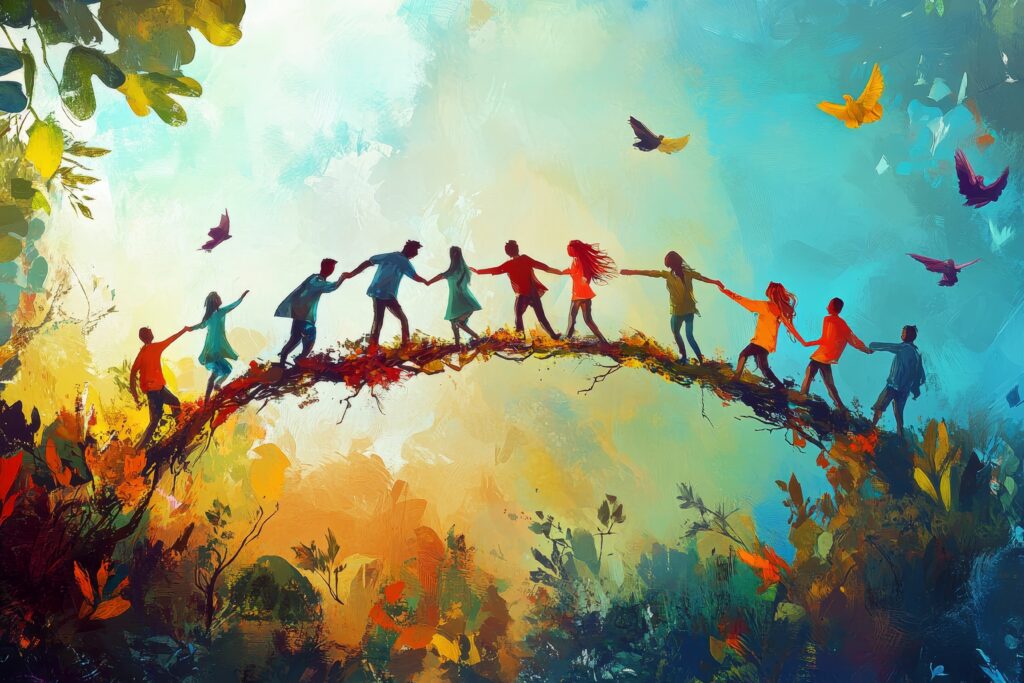July 8, 2025
Dear Friends,
The Interfaith Peace Project continues its ongoing observance of International Women’s Day (March 8) and the International Day of Peace (September 21) by sending out reflections on the eighth and twenty-first of every month. On March 8, Fr. Tom started a 10 part series on the Beloved Community. You will receive a section of the series on the 8th and 21st of each month through July 21, 2025. If you miss a part of the series, you can find it on our blog at interfaithpeaceproject.org. If you have anything that you would like to share, please contact:
Thomas P. Bonacci, C.P.
[email protected]
925-787-9279

Adobe Stock 1143159715 by jambulart
BUILDING THE BELOVED COMMUNITY:
BUILDING BRIDGES
A Reflection by
Rev. Patrick E. Davis
Today, July 8, 2025, we continue The Interfaith Peace Project’s ongoing tradition of honoring International Women’s Day (March 8) and the International Day of Peace (September 21) by posting a reflection on the eighth and twenty-first of every month.
Currently, The Interfaith Peace Project has been providing a series of reflections on the Beloved Community. I am pleased to provide this month’s reflection on “Building the Beloved Community”.
I start by defining what Dr. Rev. Martin Luther King, Jr., envisioned as the beloved community. For him, inclusivity was key and required people from all racial, national, religious and ethnic backgrounds to be respected and their human dignity to be affirmed. For him, a most important distinction of the Beloved Community was it be formed, not by the eradication of differences, but by the affirmation of the differences, by each person claiming the identity and cultural legacies that shape who they are and how they live in the world.
Howard Thurman was an American author, philosopher, theologian, Christian mystic, educator, and civil rights leader. His commitment to a spiritually and physically integrated society and to the methods of Gandhian nonviolence served as a major influence on Dr. Rev. Martin Luther King Jr.’s life. Thurman was convinced that the beloved community was achievable because of the dedication he saw from activists during the struggle for racial integration.
If we are to take seriously the work of building the beloved community, we must take seriously an organized policy of action focused on using vigorous campaigning to bring about political or social change. And such rigorous activism must be always dedicated to peaceful action in the spirit of what John Lewis called “good trouble.” The beloved community must rigorously “Speak up, speak out, get in the way. Get in good trouble, necessary trouble, and help redeem the soul of America” (John Lewis).
Second, a most important part of building the beloved community will involve what Pope Leo XIV said is our “common path” which can and must be understood to involve everyone, “in a spirit of human fraternity.” Today, he said, “is the time for dialogue and building bridges.”
Pope Leo XIV also called to mind “the remarkable efforts made by Pope Francis in favor of interreligious dialogue” and, citing the Document on Human Fraternity, said, “Through his words and actions, [Pope Francis] opened new avenues of encounter, to promote ‘the culture of dialogue as the path; mutual collaboration as the code of conduct; reciprocal understanding as the method and standard.’”
In summary, let us actively build the Beloved Community through rigorous “good trouble” activism, developing a culture of dialogue, mutual collaborations, and reciprocal understanding.


Off